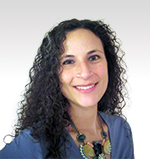Hands-on, Practical Guidance for Educators
From math,
literacy, science, equity, multilingual learners, and SEL, to assessment, school counseling,
and education leadership, our books are research-based and authored by experts
on topics most relevant to what educators are facing today.

30 Big-Idea Lessons for Small Groups
The Teaching Framework for ANY Text and EVERY Reader
This amazing 4-part framework—Engage, Discuss, Deep-See Think, and Connect—gets students interacting with texts, developing their literal, inferential, evaluative, and analytical skills.
Product Details
- Grade Level: PreK-12
- ISBN: 9781506334387
- Published By: Corwin
- Series: Corwin Literacy
- Year: 2016
- Page Count: 248
- Publication date: April 13, 2016
Review Copies
Review copies may be requested by individuals planning to purchase 10 or more copies for a team or considering a book for adoption in a higher ed course. Request review copy



